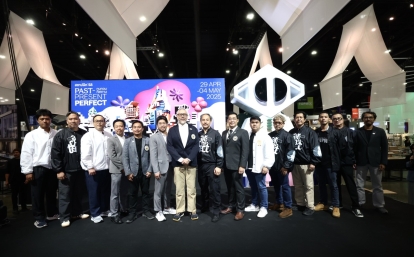Preventive Maintenance (PM) Planning for Industrial Cooling Systems
The cooling system is the heart of many types of industrial factories—whether food, beverage, pharmaceutical, or electronic parts manufacturing. Planning preventive maintenance (PM) is crucial for ensuring efficient operation, minimizing risk of significant failures, and extending equipment life. This article outlines detailed PM planning steps—from machinery checks, condenser, evaporator, control panel, to service report and documentation.


Importance of Preventive Maintenance (PM) for Cooling Systems
- Reduce risk of production downtime: A failing cooling system can halt production, causing major business losses.
- Cost savings: Repair costs after failures are usually higher than preventive maintenance.
- Improve operational efficiency: Regularly maintained systems work more efficiently and save energy.
- Extend equipment lifespan: Consistent care helps the equipment last longer.
- Maintain product quality: Properly functioning cooling systems help preserve temperature-sensitive product quality.
PM Maintenance Procedure for Cooling Systems
1. Machinery Inspection
This is the first and essential step in PM, involving the following:
Compressor Check
Measure and record operating current; compare with manufacturer’s specs; check lubricating oil level and quality; listen for abnormal noise or excessive vibration; measure suction and discharge pressure to ensure proper range.
Pipes and Valves Check
Use leak detection fluid or gas detector to find refrigerant leaks; inspect pipe insulation condition; repair or replace damaged insulation; check function of valves such as expansion valves and check valves.
Refrigerant Check
Ensure refrigerant charge is sufficient; inspect moisture and contaminants in the refrigerant, which can affect system performance.
2. Condenser Inspection
Condenser is the part that rejects heat from the system. Proper maintenance improves cooling efficiency and saves energy.
Cleaning the Condenser Coils
Spray coil cleaner over coils, rinse with low to medium water pressure to remove dust and grime without bending fins; finally clean with a soft brush or fin comb.
Cooling Fan Check
Check fan motor current, listen for abnormal noise; inspect fan blades for damage, dirt or wear; check bearings for unusual noise or vibration—replace if needed.
Structural Inspection
Inspect for rust or corrosion; clean and apply anti-rust paint; check stability of mounting base and supports to ensure safety.
3. Evaporator Inspection
The evaporator absorbs heat from the cooled space. Proper care maximizes heat exchange efficiency.
Cleaning the Evaporator Coils
Use a soft brush or vacuum to remove dust, then clean with appropriate coil cleaner, rinse, dry, and apply disinfectant to prevent mold, bacteria, or microbial growth.
Drain Line Inspection
Clean condensate pan to prevent clogging; inspect and clean drain lines; if equipped with drain pump, check operation and clean thoroughly.
Cooling-Air Fan Check
Check blower motor current and noise; clean and inspect blades for damage; lubricate rotating parts per manufacturer recommendations.
4. Control Panel Inspection
The control panel is the brain of the cooling system. Regular inspection ensures safe and stable operation.
Electrical Protection Device Check
Check breaker condition, fuse integrity and rating, and overload relay settings to ensure electrical safety.
Control System Check
Verify thermostat operation and accuracy, timer settings and function, and automatic control systems operation.
Electrical Connections Check
Inspect contact wear and replace if needed; tighten loose terminals; check insulating sleeves for damage and replace as necessary.
5. Service Report Documentation for PM
Maintaining documentation is vital in PM. Reports help track maintenance history and plan for the future.
Service Report Components
A comprehensive report should include: PM date, technician names, start/end time; equipment details (model, serial, location, usage age); checklist items with results; parameter readings (temperature, pressure, current); parts replaced; observations and recommendations for future actions.
Photographic Documentation
Take photos of machinery before PM, key steps during service, after service status, and problem areas needing further attention.
Report Storage and Use
Organize and store reports (both paper and digital) for easy retrieval; analyze report data to identify trends, preempt future issues, and improve PM planning.
PM Preparation & Necessary Equipment
Proper preparation and tools ensure effective and safe PM. Essential instruments include clamp meter, pressure gauge, infrared thermometer, refrigerant leak detector, multimeter, and airflow meter. Mechanics should have wrench and screwdriver sets, various pliers, refrigeration pipe tools, cleaning brushes, water jet sprayer, industrial vacuum. Required chemicals: condenser/evaporator cleaner, disinfectants, rust inhibitor, lubricants, spare refrigerant. Safety equipment includes protective gloves, safety glasses, helmet, safety shoes, and fall protection gear if required.
Safety Precautions & PM Techniques
Always cut power before working on electrical components; confirm machinery is fully powered down. Be cautious of high refrigerant pressure—follow safe depressurization procedures. Prevent refrigerant leaks—some refrigerants may be hazardous to health or environment. Be cautious of extreme temperature components and wear appropriate protection gear.
Conclusion
Planning PM for industrial cooling systems is vital to maintain system efficiency and extend equipment life. Regular, systematic PM reduces risk of major failures, lowers long-term costs, and enhances production reliability.
Adhering to comprehensive PM steps—including machinery, condenser, evaporator, and control panel checks—along with organized reporting and photographic documentation, maximizes maintenance effectiveness. A well-implemented PM plan is a valuable investment in your industrial operations, to be carried out by skilled technicians and engineers equipped with the right tools and experience. Companies like Shantech Group (Thailand) Co., Ltd. provide complete cooling system services and preventive maintenance (PM) for industrial refrigeration systems.

 China
China  Japan
Japan  Cambodia
Cambodia  Laos
Laos  Myanmar (Burma)
Myanmar (Burma)  Thailand
Thailand  United States
United States  Vietnam
Vietnam 
